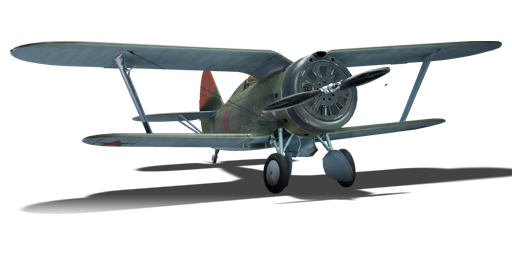



The I-153P is a premium Soviet fighter. It has been in the game since the start of the Open Beta Test prior to Update 1.27.
There is one thing you need to know about the I-153; you will out turn everything it fights. Not a single plane the Chaika fights will win against the I-153P in a turn fight. At a BR of 3.0, however, the Chaika's once moderate speed is now very bad. Nearly every plane will be faster; especially due to how the Chaika locks up at high speed, making it extremely difficult to manoeuvre at high speed. However, plenty of people underestimate the lowly Chaika, and attempt to turn with it. If you notice someone is trying to turn fight you, simply out turn them and light them up with 2 x 20 mm. However, bear in mind the Chaika is also more fragile than most planes in the game; a single 20 mm shot on it is almost always death.
flaps
flaps
flaps
brake
| Belt | Belt filling | Armor penetration (mm) at a distance: | |||||
|---|---|---|---|---|---|---|---|
| 10 m | 100 m | 500 m | 1000 m | 1500 m | 2000 m | ||
| T/HEF-I | 10 | 8 | 7 | 6 | 0 | 0 | |
| T/HEF-I/T/T | 10 | 8 | 7 | 6 | 0 | 0 | |
| HEF/HEF-I/HEF/T | 10 | 8 | 7 | 6 | 0 | 0 | |
| HEF | 4 | 4 | 4 | 4 | 4 | 4 | |







 2 x (50 / 190 / 230) %
2 x (50 / 190 / 230) % 
 2 x 124 %
2 x 124 % 

Flight performance | |
|---|---|
Survivability |
|---|
Weaponry | |
|---|---|